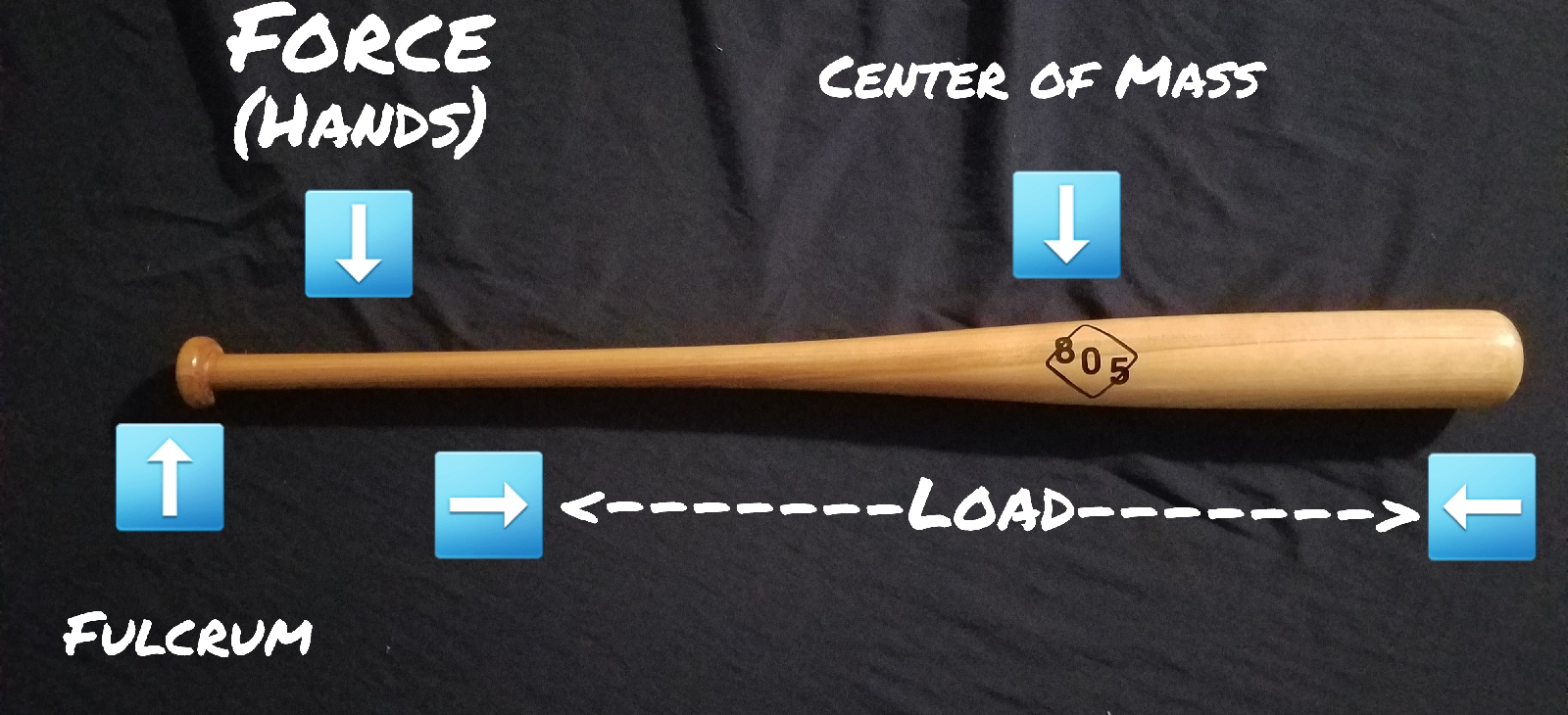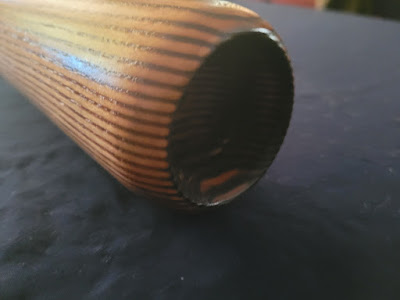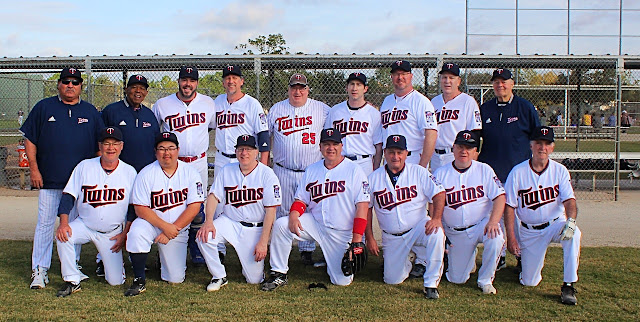What is Swing Weight?
How does swing weight factor into choosing the right bat for you?
When you walk into a sporting goods store and browse the baseball bats, you'll usually find the bat length on the knob or barrel. But the bat weight may or may not be included.
Budget bat options don't usually list the weight as they are mass produced from lower quality billet stock. Weight can vary widely from bat to bat, even with the same model and length. A 33 inch bat might weigh 29oz or 35oz in this case. If you have one of these budget bats, you can put it on a food or postage scale at home to find its actual weight.
With higher priced stock bats, you're more likely to find the weight listed. The most common found is a drop 3 or 3oz lighter than the length of the bat. This weight is usually accurate to within .25-.5oz depending on the manufacturer. With custom bats, whether it's listed depends on the order.
It's important to note that whether you weigh it yourself or rely on the listed number, the weight simply reflects the actual weight of the bat as an inanimate object. Without other factors applied, it's just a number.
What is swing weight?
Anyone who has played baseball or softball long enough can tell you that not all bats are the same. You can pick up two different models of the same length and weight, but they will feel totally different when you swing it. That difference you feel is the swing weight.
A balanced 33 inch 33oz bat can feel the same weight when swinging as an endloaded 33 inch 30 Oz bat, even though it is 3 ounces lighter. Learn about the most common bat models here.
The Science of Swing Weight
To better understand how swing weight works, consider that when the bat is in your hands it forms a simple machine called a lever (remember 7th grade science). In fact, when you swing a bat, there are multiple levers in use, including your shoulder to elbow, elbow to wrist and wrist to hands and horizontal and vertical levers. That doesnt even include the rotational force applied by your torso.
But for this, let's stay simple and focus on the levers made when your hands are on the bat. Depending on whether you keep your wrist firm through the swing or snap the wrists right before contact, either the end of the knob or the bottom hand is the fulcrum (pivot point), your hands are delivering the force and the bat beyond your hands is the load. The center of mass is the balance point between the top of your hands and the end of the bat.
 |
| Baseball bat as a lever |
If you were paying attention in that science class so long ago, you might remember that the farther the center of mass is from the fulcrum, the more force is needed to move the lever. In contrast, the closer the center of mass is, the less force is needed to move it. The more the weight is located toward the bat, the more power it takes to move it.
This concept is a critical factor in swing weight. As you swing, your hands and bat form a lever on a horizontal plane moving towards the ball. But there is another force being applied while you swing and it's on a vertical plane. You guessed it...gravity.
 |
| Gravity constantly pulls down on the end of the bat during the swing |
So while you are having to provide force to swing the bat horizontally, at the same time you are applying force to fight gravity from pulling the bat head down. And the same lever mechanics apply to keeping the bat on plane. The further the center of mass is from your hands, the more gravity will pull down on the end of the bat. Consequently, you'll need to apply more force to keep the bat head from dropping.
Training the levers
Many training bats are designed to train your swing based on the horizontal or vertical plane.
The Camwood Bat Hands Trainer®️ concentrates on training the horizontal plane. It has added weight close to the hands creating a light load swing weight. These bats can weight 45oz while swinging like they are 30 oz. It's purpose is to train your muscle memory to keep the hands closer to the body and feel the push of the hands moving through the zone.
The Beast®️ training system from Dovetail Bats works the vertical plane more, while concentrating on getting the bat head through the zone faster. These training bats are very endloaded and build forearm and rotational strength. They weight from 33-50oz depending on the one you are using.
Traditional heavy training bats train both planes at once. They are typically the same balance as a regular bat but have a heavier actual weight often 35-40oz.
How is swing weight applied to baseball bats?
In baseball, swing weight typically isn't conveyed as a number, but rather, by terminology. Light, balanced and endloaded are the most common terms to distinguish swing weights, with variations to better pinpoint differences in models (ie. slightly endloaded).
⚾️⚾️ Endloaded- refers to bats where center of mass is farthest from the knob of the bat. These bats can offer more power but typically less control.
⚾️⚾️ Balanced--refers to bats where center of mass is closer to the middle between the hands and end of the bat. These can have decent control while still allowing for power.
⚾️⚾️ Light weight--refers to bats where center of mass is relatively close to the hands. These bats offer maximum control in exchange for some power.
 |
| The center of mass creates a more balanced or endloaded feel on the bat. |
The way baseball is played has changed a lot in the last century. The fields are different, the players are different, the ball is different, style of play is different and the bat is very different.
In the early 1900s, teammates often used the same bats. A team bought a supply for their club and a batter would choose one on his way to the plate. Some players had their own bats if they bought them or got them from a sponsor. In either case, the bats used at the time went through countless at bats. Franchises didn't have the massive budgets they do today, so they wanted bats that would put up with a lot use without breaking.
The bats used back then were usually made of ash as the heavier hickory was phased out. Ash, especially the old growth lumber available then, has a good relative hardness, particularly on the side grain, and is lighter than hickory. For durability, the bats had thick handles and were heavy compared to today's bats.
Though they had a heavy actual weight (often 34-40oz) they often had a relative light swing weight due to the thick handle. Along with the sometimes large dimensions of the outfield and deader baseball, these bats gave players great control since homeruns at the time were exceptional rather than expected.
Over time, the game progressed. Franchises got richer. More bat manufacturers came on the scene and bat making became more automated. That gave birth to a wide variety of new bat models along with the ability to mass produce quantities of bats. Homeruns became a bigger part of the game, and with larger equipment budgets, bat breakage became a slightly lesser concern.
The 60s and 70s saw many new models introduced that had thinner handles and bigger barrels. This in turn led to more balanced and endloaded bats coming on the scene. The thinner handles allowed for more whip in the bat. But the change in center of mass led to less control. Subsequently, homeruns increased, but so did strikeouts.
Bats continued to evolve. In the early 2000s, maple was introduced to MLB. A harder wood than ash, maple saw an opportunity for even thinner handles, creating some bat models that are extremely endloaded. It should be noted, though, that the maple bat that influenced the move to maple, the Sam Bat used by Barry Bonds, was a relatively balanced bat due to the huge bell knob it sported.
Today there are 1000s of bat models. Most fall between balanced and endloaded. Thick handle, light swing bats are not as popular any more, though you can find them from a handful of manufacturers or have them custom made.
How wood bat makers create different swing weights.
As mentioned before, there are 1000s of models of baseball bats, especially in the world of wood bats. Most aren't widely available as stock bats, though some popular or long trusted models can be found easily from most bat companies. Some of these models are the 243, 271, 110, 73 (similar to R2K1), or AP5. All of these bats have different characteristics that make them unique.
When creating a model, crafters make adjustments of measure to the different components of the bat. These include the knob, knob taper, handle, barrel taper, barrel and end. A change in any of these has an effect on both the actual weight and swing weight of a bat. The art in bat making is adding or subtracting to these parts to create a bat with the dimensions, weight, swing weight and feel desired.
 |
| Knobs are part personal preference and part counterbalance |
Knobs
The bat knob plays a couple of roles. For hitting it can act to keep the bat firmly in the hands. But it also acts as a counterbalance for the bat. This counter balance effect can be best demonstrated in the way a batter will choke up on the bat to gain more control of the bat head.
A large knob can serve to make a big barrel bat more balanced as seen in the 73 model where a 2.5" barrel is counterbalanced by a large bell type knob.
A smaller knob can help create an endloaded bat, especially if the batter likes to hang the bottom fingers off the end of the knob.
Knob taper
The knob taper also serves multiple roles. A big one is in grip comfort for the bottom hand. A straight handle (with no taper) is preferred by some while others go for a larger taper like that on a bell knob. Still others like a "no knob" bat which features a medium large taper extending to the bottom of the bat. Most common is a medium taper such as found on the 271 or AP5 models.
The knob taper affects swing weight similar to the way the knob does. A larger taper creates more balance and counter weight while a smaller taper contributes to a more endloaded feel.
Handle
The handle might be the most personal factor as far as player comfort goes. A thick or thin handle preference often comes down to what feels right to the batter.
A thin handle can lead to a more endloaded bat unless counterbalanced by a large knob. A thick handle will create a more balanced bat as the center of mass is moved closer to the hands.
Barrel taper
The barrel taper is the center part of the bat where it slims down from the barrel to the handle. Most of the time, when a player says they "hit it off the handle" this is actually the area the ball hit the bat.
In endloaded bats, the taper is usually fast and pronounced.
In a balanced bat, the taper is typically more gradual.
Barrel
This is where the work is done. In this area of the bat lives the "sweet spot". The size of the sweet spot varies greatly by model.
Endloaded bats will have a either a large, thick barrel, a long barrel or sometimes both before it tapers. These bats can often have a smaller sweet spot but have more pop when it's hit.
In balanced bats, barrel size can vary from larger barrels that almost continuously taper down or have smaller barrels. Balanced bats tend to have fairly large sweet spots but not as much carry when hit.
Bat end
Fun fact: By rule, the end of a wood bat cannot be squared off. It must be rounded, but how much so is not defined
This is another spot on the bat that plays a role In swing weight. A very rounded end cuts weight off the farthest part of the bat. This is often seen in balanced bats. A slightly rounded end is common on endloaded bats to bring more weight to the end.
The end is also where you have a choice. Cupped or not. Cupping rules are fairly straight forward. No more than 2 inches across, no more than 1 inch deep and it must be rounded.
 |
| Cupping removes mass from the end of the bat moving the center of mass closer to the hands |
Cupping can add balance by shifting the center of mass. It can also have an added bonus of allowing for a denser billet to be used, reducing the chances of breakage.
Not cupping allows for more mass at the end of the bat that is sometimes favored by power hitters.
Bat length
"What swing weight is right for me?"
What swing weight should you be using? It's going to ultimately come down your own personal preference, but there are a few tips that can help you decide.
Light load and balanced bats make it easier to control the bat head through the zone. They are easier to move at the start of the swing. They are also easier to stop if you need to check your swing. They tend to have a faster bat speed if that is something you struggle with. They have a little less mass behind the point of contact, so the ball won't go as far as it would with an endloaded bat, assuming bat speed and point of contact are equal. Still, used right, these bats can give plenty of power.
Light and balanced bats are good for hitters new to wood bats, gap to gap hitters and contact hitters. They can be slump busters if you are having trouble timing up pitches. They are easier to use for those that don't have a lot of torso and forearm strength too.
Endloaded bats have the advantage of having more mass at point of contact. They are harder to control through the zone. But if you are relatively strong and have good timing on a pitch, an endloaded bat can provide a lot of power for a hitter.
Endloaded bats are good for power hitters or those hitters that want a little more distance on a squared up ball. Just keep in mind they are more difficult to control and bat speed will be lower than with a balanced bat.
Whatever your swing is, there's a bat out there to maximize your efforts.
Its always good to remember, a bat wont make you a great hitter. Only practice, hard work, good mechanics and good repetition can do that!!
But...the right bat with the right swing can have great results.
⚾️⚾️⚾️
What is your preferred swing weight? I'd love to hear which model you prefer to swing with. Let me know in the comments. Please share this article to anyone you know struggling to find the right bat to use.
⚾️⚾️⚾️
Play ball





Awesome article!
ReplyDelete